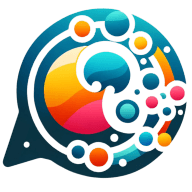11 Communication Techniques that Build Stronger Customer Relations
Effective communication is the cornerstone of strong customer relations. This article explores proven techniques that can transform ordinary interactions into lasting partnerships. Drawing on insights from industry experts, these strategies offer practical ways to build trust, demonstrate transparency, and create meaningful connections with customers.
- Post-Job Check-In Builds Long-Term Trust
- Proactive Simple Transparency Fosters Client Confidence
- Personalized Follow-Ups Transform Transactions into Relationships
- Operational Updates Showcase Customer Success Stories
- Empathetic Updates Demonstrate Respect and Transparency
- Active Listening Creates Emotional Customer Connections
- Setting Clear Expectations Turns Service into Partnership
- Context Bridging Demonstrates Strategic Partnership Commitment
- Radical Transparency with Humor Earns Trust
- Clear Recaps Remove Ambiguity and Build Confidence
- Direct Phone Calls Foster Genuine Connections
Post-Job Check-In Builds Long-Term Trust
Building strong customer relations isn't about using a particular script. The single most effective communication technique is the post-job check-in phone call—I personally call the client weeks after the roof is finished to check the quality of the work after the first big rain.
The process is straightforward. Many contractors disappear once the check clears, which creates immediate distrust. I wait a couple of weeks for the house to experience some weather, and then I call the homeowner myself. I don't call about the payment. I call and ask, "How did the new roof hold up with that last big rain? Any issues at all?"
This simple act works so well because it eliminates the client's biggest fear: being abandoned if a leak occurs. I am calling to verify the long-term integrity of our work. This proves that my guarantee is real and that I am personally responsible for the quality, which builds undeniable, long-term trust.
The key lesson is that verbal commitment to long-term quality is the best sales pitch. My advice is to stop communicating about money and start communicating about performance. When you show a client you care about the roof's performance for the next decade, they become a customer for life.
Proactive Simple Transparency Fosters Client Confidence
Communicating clearly and building a relationship with a client is the foundation of any successful business, and it's wonderful that you're focused on that. My approach to customer relations is a simple one. The "radical approach" was a simple, human one.
The process I had to completely reimagine was how I looked at a client conversation. For a long time, I was just focused on the electrical work. But a tired mind isn't focused on the bigger picture. I realized that a good tradesman solves a problem and makes a business run smoother, but only if the client understands the work.
The single communication technique that has proven most effective is Proactive, Simple Transparency. This means I don't use technical jargon, and I explain the problem and the solution using simple analogies that the client can immediately understand. I'll compare an overloaded circuit to putting too many appliances on one kitchen counter. I communicate why I'm doing what I'm doing, and how it will benefit them in the long run.
I think it works so well compared to other methods because it builds trust. It shows the client that I am not trying to overcharge them or hide a problem. The client sees that I respect their intelligence and their home. That simple act of transparency instantly turns a nervous client into a confident, loyal customer.
The impact has been on my company's reputation and my own peace of mind. By being a professional who communicates clearly, I've built a business that I can trust. This has led to better work, fewer mistakes, and a stronger reputation.
My advice for others is to just be honest. A job done right is a job you don't have to go back to. Don't hide behind jargon. That's the most effective way to "build stronger customer relations" and build a business that will last.

Personalized Follow-Ups Transform Transactions into Relationships
The single communication technique that has had the biggest impact on my customer relationships is personalized follow-ups. Instead of sending generic "thank you" messages or automated check-ins, I take a few minutes to reference specific details from our last conversation—such as a challenge they mentioned or an upcoming milestone for their business.
This small gesture transforms a transaction into a relationship. Clients realize they're not just a line item in a CRM; they're being heard and remembered. It's simple, but it builds trust faster than any marketing email ever could.
I believe it works so well because it taps into something universal—people want to feel seen. In an age of automation and mass communication, genuine personalization stands out. It's not about writing long messages; it's about making every interaction feel intentional. Over time, this approach has turned one-time clients into long-term partners who advocate for our brand.

Operational Updates Showcase Customer Success Stories
For a long time, customer communication was just a simple set of instructions. We would send out generic status updates, but it did nothing to build a brand or to connect with our customers on a personal level. We were talking at our customers, not with them, and our communication was invisible in a sea of other suppliers doing the same thing.
The single most effective communication technique is to use operational updates as a platform for customer success stories. The role a strategic mindset has played in shaping our customer relations is simple: it has given us a platform to show, not just tell. Our core brand identity is based on the idea that we are a partner to our customers, not just a vendor, and our communication is how we prove that.
It works so well because we created a new process where our operations team is trained to identify and track customer success stories. When a customer uses our product to solve a difficult problem, we treat it as an opportunity. The focus isn't on the shipment status; it's on their skill, their expertise, and their success in navigating the issue. This makes the customer the hero of the story.
This has been incredibly effective. Our customer relations are now defined by the quality of our customers and the work they do, which is a much more authentic way to build a brand. Our communication is no longer a broadcast channel for our processes; it's a community of experts, and we're just the host.
My advice is that you have to stop thinking of communication as a place to promote your process and start thinking of it as a place to celebrate your customers. Your brand is not what you say it is; it's what your customers say it is.

Empathetic Updates Demonstrate Respect and Transparency
If I had to select a single communication style that changed things for us, it would be offering empathetic updates. While that may not sound like much, it is effective because it represents respect, transparency, and humility all in one.
Whenever something important changes with us at Legacy, whether due to a scheduling change, platform update, or onboarding issue, we avoid going the sterile "here's what's new" email approach. Instead, we begin with the "why," acknowledge the potential friction, and begin the invitation for questions or feedback from the outset. We also commit to a clear follow-up by when they can expect updates, even if those updates are simply "here's where we are today" updates.
Empathetic updates are considerably more effective than newsletters or generic announcements. They humanize communication, build trust even when things are messy, and open up channels for feedback we wouldn't otherwise receive. Oftentimes, parents or students surprise us with insights that we can use to directly improve our systems. Because they are part of the conversation versus being managed, their loyalty grows naturally.
Since we began doing this, we have seen fewer complaints, more constructive feedback, and even new course ideas suggested by families. In a world where education often feels distant or transactional, this simple technique keeps us rooted in real relationships, and that has made all the difference.

Active Listening Creates Emotional Customer Connections
The most effective communication technique I've found for building stronger customer relationships is active listening. This involves fully focusing on what the customer is saying, reflecting back their concerns or needs, and asking clarifying questions to ensure complete understanding. It's not just about responding to what's being said but showing genuine empathy and interest in their perspective.
This approach works exceptionally well because it creates a sense of trust and validation. Customers feel heard, valued, and understood, which is fundamental in forming a strong relationship. For instance, when a customer voices a concern or frustration, instead of just offering a quick fix, I take the time to ask follow-up questions, ensuring I fully comprehend their situation. Then, I can offer a solution that directly addresses their needs, and they feel confident in my ability to help them.
Active listening stands out compared to other methods because it goes beyond transactional communication. It fosters an emotional connection, making the customer feel respected and engaged, which in turn, leads to better customer retention, increased loyalty, and often, more positive word-of-mouth.

Setting Clear Expectations Turns Service into Partnership
One thing that's made a big difference for us is setting clear expectations up front. Before every service, our team explains exactly what we'll be treating, what results to expect, and how long it might take to see full effectiveness. Proactive communication prevents confusion and helps customers feel informed and confident from the outset.
This approach works because it turns pest control into a partnership rather than a transaction. When people know what's happening and why, they're less likely to worry or second-guess the process. It builds trust early and reduces the need for reactive calls later, which in turn keeps satisfaction and retention consistently high.

Context Bridging Demonstrates Strategic Partnership Commitment
"Context bridging" - explicitly connecting current conversations to previous interactions and long-term customer goals - proves most effective because it demonstrates that you view the relationship as an ongoing strategic partnership rather than transactional service delivery.
Most business communication treats each interaction as isolated: answering immediate questions, solving current problems, or providing requested updates. However, customers build stronger relationships with service providers who demonstrate understanding of their broader business context and remember their strategic objectives across multiple touchpoints.
The technique works by starting conversations with references to previous discussions and connecting current topics to the customer's stated long-term goals. Instead of "Here's the report you requested," you say "Based on our discussion about expanding into the Northeast market, this report shows the demographic trends that support your Q3 launch timeline."
This approach signals that you're invested in their success beyond the immediate transaction. It shows active listening, strategic thinking, and genuine interest in their business outcomes rather than just completing assigned tasks.
The effectiveness comes from psychological reciprocity and trust building. When customers feel understood and remembered, they become more collaborative, share more information, and view you as a strategic resource rather than a vendor. They're also more likely to forgive occasional service issues because the relationship feels personally valuable.
The strategic advantage is sustainable differentiation. Competitors can match pricing, features, or service speed, but they can't replicate the accumulated understanding and relationship depth that context bridging creates over time. Each interaction builds on previous conversations, creating switching costs that go beyond contractual obligations.
This transforms routine business communication into relationship-building opportunities that compound customer loyalty and create competitive moats through genuine partnership development.

Radical Transparency with Humor Earns Trust
This is the single communication technique I cherish the most. This concept of radical transparency works well with a twist of humor. Instead of sugarcoating delays or issues, I told customers exactly what went wrong in plain language, sometimes with a self-deprecating joke like "our servers took a nap they weren't supposed to."
Why does it work better than polished PR nonsense? Because people can smell corporate spin from a mile away. They do not want vague "we value your patience" emails. They want to know what broke, when it will be fixed, and that you are not treating them like toddlers. Add a bit of personality and suddenly you are not just a faceless brand, you are a flawed but honest partner. Compared to robotic communications or empty empathy statements, this approach surprises people, earns trust faster, and actually makes them like you more for messing up.

Clear Recaps Remove Ambiguity and Build Confidence
The technique that has made the greatest difference is closing every interaction with a clear recap of what was discussed and what will happen next. Instead of ending a meeting or call with vague agreement, I send a short written summary within twenty-four hours. It outlines decisions, action items, and timelines.
This works better than other methods because it removes ambiguity. Customers no longer wonder if their concerns were understood or when they can expect progress. In one grant consultation, a client initially expressed frustration about delays. After adopting this recap practice, her confidence shifted almost immediately because she saw a transparent roadmap after every exchange. The consistency built trust faster than frequent check-ins or marketing follow-ups could have, since it demonstrated reliability through action. Over time, that clarity became a differentiator, setting the tone for long-term relationships grounded in accountability.

Direct Phone Calls Foster Genuine Connections
For me, the most effective technique has been calling clients directly instead of relying on email or text. A short conversation clears up questions faster, removes any guesswork, and helps people feel at ease.
Hearing a real voice builds trust in a way written updates can't. Tone, pacing, and even a pause in the right moment show you're present and invested. That simple act of reaching out by phone leaves a lasting impression and strengthens the relationship long after the deal is done.



